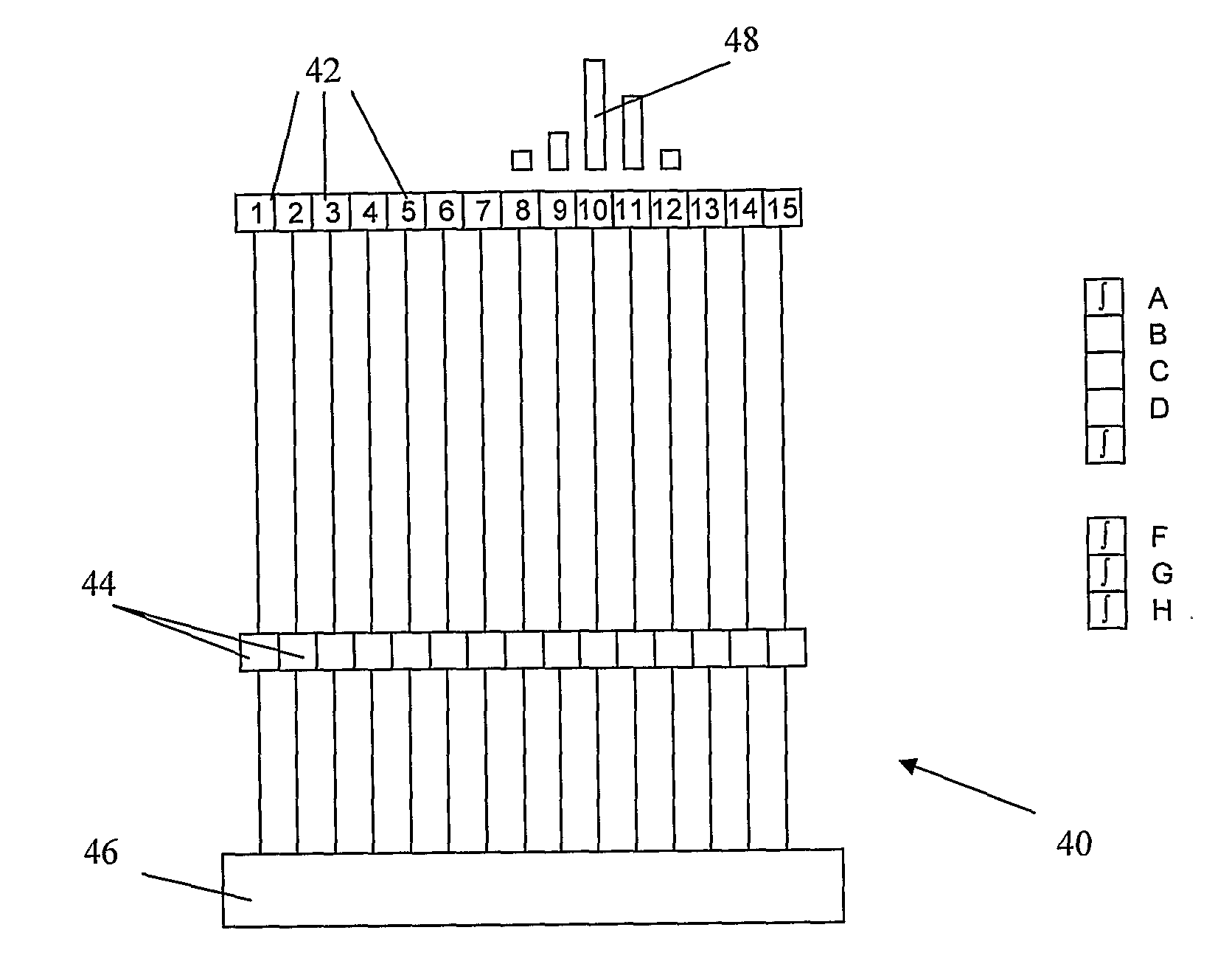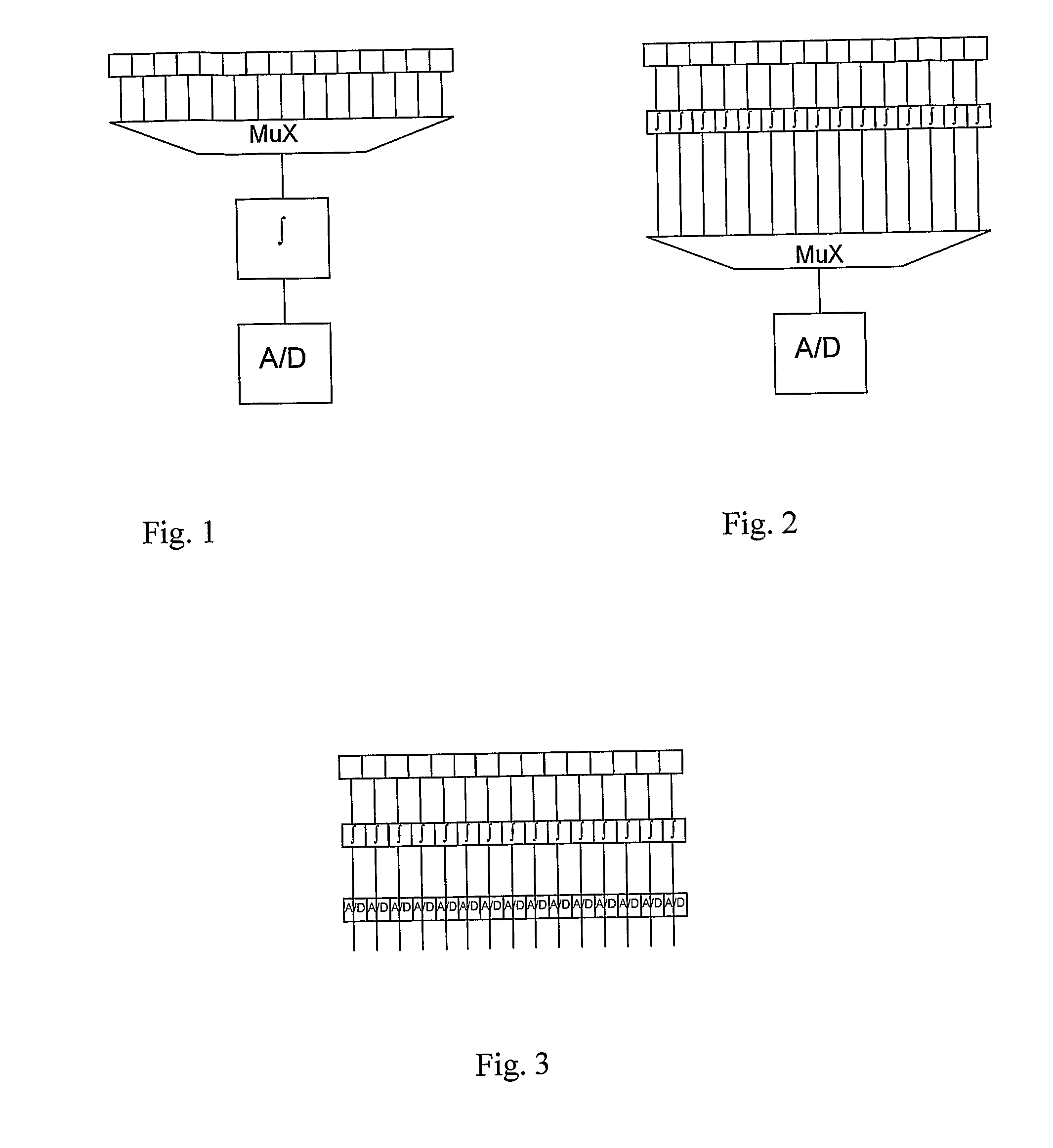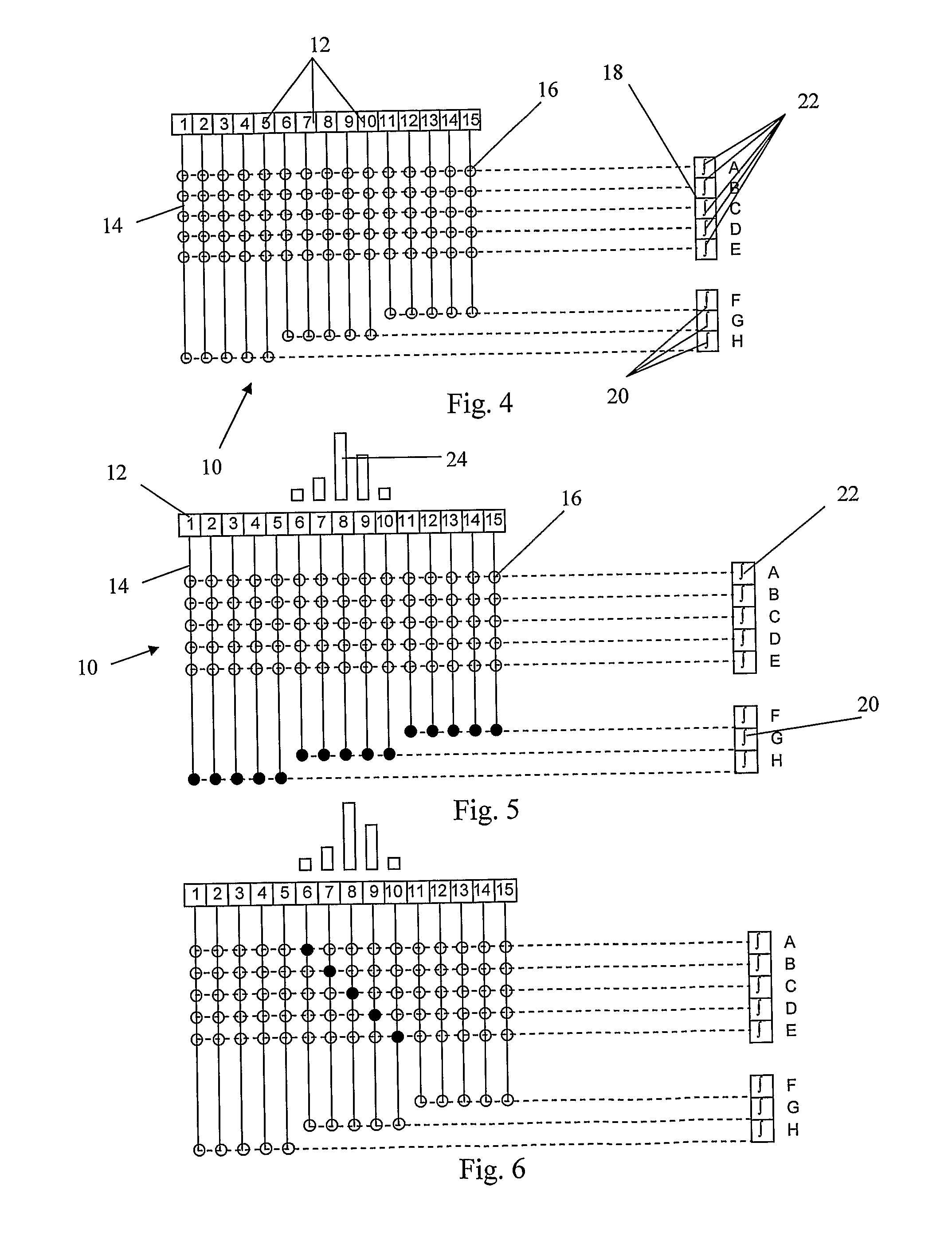Apparatus and method for operating a spectrometer
a spectrometer and apparatus technology, applied in the field of apparatus and apparatus for operating a spectrometer, can solve the problems of large power consumption, system rate limitation, and inability to read integrator signals one at a time, and achieve the effect of reducing the cost of production, and increasing the cost of production
- Summary
- Abstract
- Description
- Claims
- Application Information
AI Technical Summary
Benefits of technology
Problems solved by technology
Method used
Image
Examples
Embodiment Construction
[0022]FIG. 4 shows spectrometer reading apparatus 10 comprising a plurality of photosensitive diodes, or pixels, 12 connected as inputs to a switch matrix 14. The switches of the switch matrix 16 comprise field effect transistors. Integrators 18 are connected to the output of the matrix 14. The integrators 18 comprise group integrators 20 and individual integrators 22. The group integrators 20 are each connected to adjacent groups of five pixels 12. As shown in FIG. 4, several pixels 12 are routed to one group integrator 20 by closing multiple switches in the matrix 16. This sums the currents from each of the pixels 12 and routes them to a common group integrator 20. The individual integrators 22 are connected to the switch matrix 16 such that any pixel 12 maybe put in communication with any of the individual integrators 22. The switch matrix 14 is a non-blocking matrix with respect to the pixels 12 and the individual integrators 22.
[0023]The individual integrators 22 are connected ...
PUM
 Login to View More
Login to View More Abstract
Description
Claims
Application Information
 Login to View More
Login to View More - R&D
- Intellectual Property
- Life Sciences
- Materials
- Tech Scout
- Unparalleled Data Quality
- Higher Quality Content
- 60% Fewer Hallucinations
Browse by: Latest US Patents, China's latest patents, Technical Efficacy Thesaurus, Application Domain, Technology Topic, Popular Technical Reports.
© 2025 PatSnap. All rights reserved.Legal|Privacy policy|Modern Slavery Act Transparency Statement|Sitemap|About US| Contact US: help@patsnap.com



